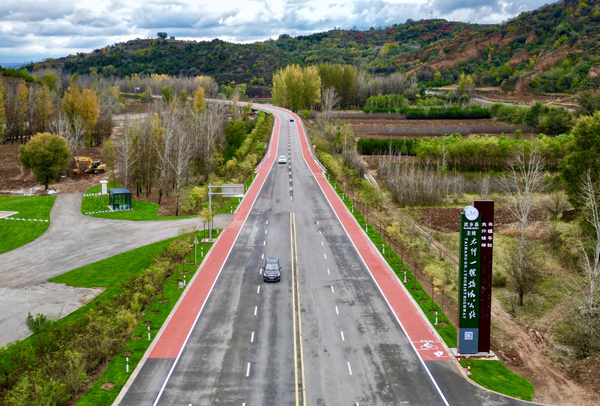Shanxi opens largest tourism highway network
Updated: 2024-10-21

Vehicles ply on the Taihang No 1 Tourist Highway in Wuxiang county, Shanxi province, on Friday, as the highway opens. ZHU XINGXIN/CHINA DAILY
A tourist road network spanning 13,000 kilometers, largest of its kind in China, was opened in Shanxi province, officials announced on Friday.
The road network comprises three highway systems – Yellow River No 1, Great Wall No 1 and Taihang No 1. A total of 531 national protection units and 976 tourist attractions across the province, as well as 5,630 villages, are connected to them.
Guo Bingfu, director of the Shanxi Provincial Department of Transportation, said at the opening ceremony of the tourism highway in Wuxiang county that the province has invested 100 billion yuan ($14 billion) to construct the tourism highway network since 2018.
"The road network will strongly promote Shanxi's rural vitalization and support the province in building an internationally renowned cultural tourism destination," he said.
Guo said continuous efforts will be made to improve the service facilities along the roads, turning them into warm channels for visitors to enjoy the province's beautiful scenery.
He said the province will also promote the integrated development of the tourist highways with cultural tourism, health and wellness, modern agriculture, industrial parks and digital economy, thus transforming them into a new development engine for Shanxi.
Local authorities said the sightseeing highways will provide tourists with fast access to the province's popular scenic spots including the Xiaoxitian, the Xuankong Temple and the Yingxian Wooden Pagoda, which recently gained wide attention after appearing in the popular video game Black Myth: Wukong.
These roads also allow tourists to have an in-depth touring experience at landmark attractions, such as the Hukou Waterfall on the Yellow River, Yanmenguan Pass and the Taihang Mountain Grand Canyon, as well as "red tourism" destinations.
Red tourism refers to tours of former revolutionary sites relating to the Communist Party of China that combine offerings of patriotic education and sightseeing.
Zhao Jiayin, a 16-year-old resident of Wangjiayu village in Wuxiang, said the road in her village was just a poor dirt track in her childhood, but now it became solid and beautiful, with green plants and sculptures along the way.
Home to the former headquarters of the Eighth Route Army, a major military force led by the CPC who fought the Japanese invaders more than 70 years ago, Wangjiayu is an important red tourism destination in Shanxi province.
"In the future, I want to become a tour guide and better promote my hometown to the outside world," Zhao said.
Hao Linlu, who moved from the county town to work at the memorial hall of the Eighth Route Army headquarters in Wangjiayu last year, said the construction of the tourist roads has made the traffic smoother and traffic jams no longer occur in the village.
Guo Jianbo, an official in charge of rural road management at the Shanxi Provincial Department of Transportation, said the tourist roads have injected new vitality into the rural areas along the routes, changing the appearance of villages and bringing happiness and prosperity to rural residents.



